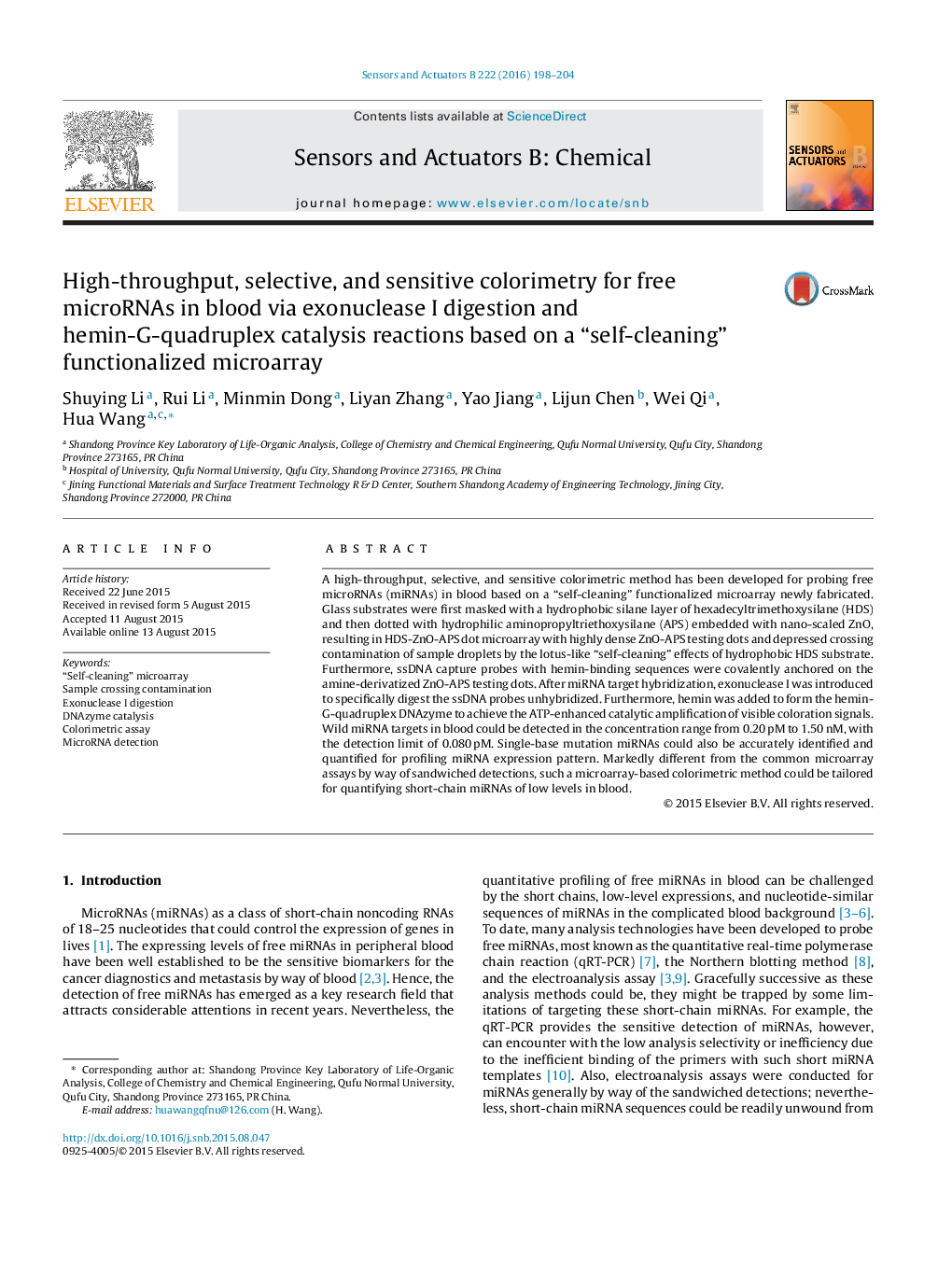| Article ID | Journal | Published Year | Pages | File Type |
|---|---|---|---|---|
| 7145026 | Sensors and Actuators B: Chemical | 2016 | 7 Pages |
Abstract
A high-throughput, selective, and sensitive colorimetric method has been developed for probing free microRNAs (miRNAs) in blood based on a “self-cleaning” functionalized microarray newly fabricated. Glass substrates were first masked with a hydrophobic silane layer of hexadecyltrimethoxysilane (HDS) and then dotted with hydrophilic aminopropyltriethoxysilane (APS) embedded with nano-scaled ZnO, resulting in HDS-ZnO-APS dot microarray with highly dense ZnO-APS testing dots and depressed crossing contamination of sample droplets by the lotus-like “self-cleaning” effects of hydrophobic HDS substrate. Furthermore, ssDNA capture probes with hemin-binding sequences were covalently anchored on the amine-derivatized ZnO-APS testing dots. After miRNA target hybridization, exonuclease I was introduced to specifically digest the ssDNA probes unhybridized. Furthermore, hemin was added to form the hemin-G-quadruplex DNAzyme to achieve the ATP-enhanced catalytic amplification of visible coloration signals. Wild miRNA targets in blood could be detected in the concentration range from 0.20Â pM to 1.50Â nM, with the detection limit of 0.080Â pM. Single-base mutation miRNAs could also be accurately identified and quantified for profiling miRNA expression pattern. Markedly different from the common microarray assays by way of sandwiched detections, such a microarray-based colorimetric method could be tailored for quantifying short-chain miRNAs of low levels in blood.
Keywords
Related Topics
Physical Sciences and Engineering
Chemistry
Analytical Chemistry
Authors
Shuying Li, Rui Li, Minmin Dong, Liyan Zhang, Yao Jiang, Lijun Chen, Wei Qi, Hua Wang,
